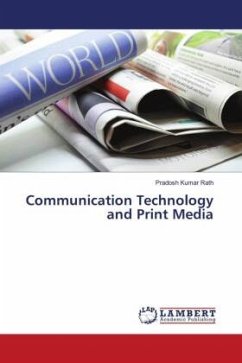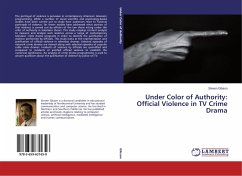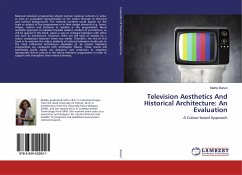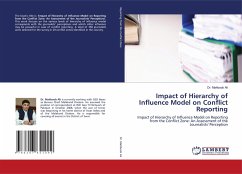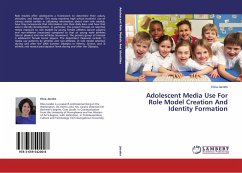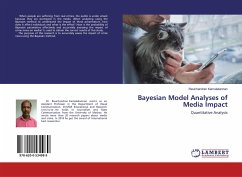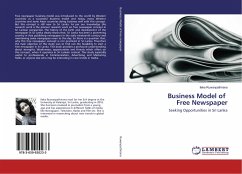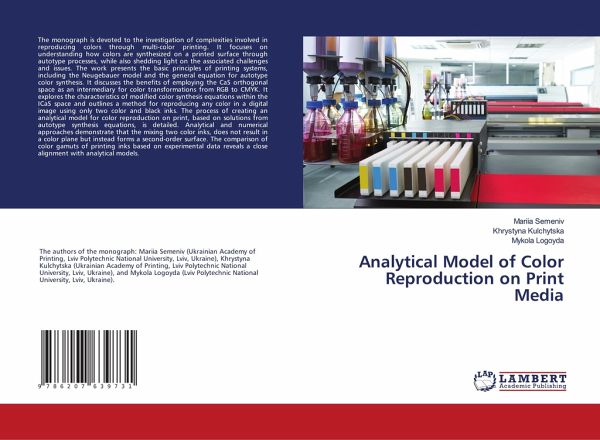
Analytical Model of Color Reproduction on Print Media
Versandkostenfrei!
Versandfertig in 6-10 Tagen
29,99 €
inkl. MwSt.

PAYBACK Punkte
15 °P sammeln!
The monograph is devoted to the investigation of complexities involved in reproducing colors through multi-color printing. It focuses on understanding how colors are synthesized on a printed surface through autotype processes, while also shedding light on the associated challenges and issues. The work presents the basic principles of printing systems, including the Neugebauer model and the general equation for autotype color synthesis. It discusses the benefits of employing the CaS orthogonal space as an intermediary for color transformations from RGB to CMYK. It explores the characteristics o...
The monograph is devoted to the investigation of complexities involved in reproducing colors through multi-color printing. It focuses on understanding how colors are synthesized on a printed surface through autotype processes, while also shedding light on the associated challenges and issues. The work presents the basic principles of printing systems, including the Neugebauer model and the general equation for autotype color synthesis. It discusses the benefits of employing the CaS orthogonal space as an intermediary for color transformations from RGB to CMYK. It explores the characteristics of modified color synthesis equations within the ICaS space and outlines a method for reproducing any color in a digital image using only two color and black inks. The process of creating an analytical model for color reproduction on print, based on solutions from autotype synthesis equations, is detailed. Analytical and numerical approaches demonstrate that the mixing two color inks, does not result in a color plane but instead forms a second-order surface. The comparison of color gamuts of printing inks based on experimental data reveals a close alignment with analytical models.





